Subtleties of care for seasonal clothes and shoes
Content:
Proper care of clothing and footwear is necessary to maintain their hygiene and extend their life. It involves washing or cleaning products, storing wardrobe items in accordance with what materials they are made of, for wearing during what period they are intended.
Garment Care: Basic Rules
The technology of washing and ironing things depends largely on what fabric they are sewn from. Therefore, each time before sending them to the laundry, you should look at the label to make sure that the temperature and detergents are selected correctly and will not damage the fabric.
In addition, it should be borne in mind that the modern chemical industry has stepped far ahead: on the shelves of stores you can find tools designed to wash a certain type of fabric (synthetics, wool, silk), colored, black and white items, down jackets, sportswear. Choosing a suitable washing powder or gel, as well as an air conditioner will help not only to remove impurities, but also to preserve the freshness of the color, softness of the fabric, and prevent the formation of “pellets”.
Many wardrobe items that previously could only be freshened up with dry cleaning, today can be put in order at home. Modern washing machines have washing modes designed for delicate fabrics, cotton, synthetics, cashmere. The right choice of washing mode, detergent and water temperature will not spoil your favorite things.
Some rules for washing and cleaning things remain unchanged for many decades.
- Underwear and hosiery are washed after a single use.
- Every time after wearing, you need to wash shirts and blouses: even if they do not show signs of sweat and stains, they cannot be considered fresh, so putting them on for the second time in a row without washing is unhygienic and impractical, since in this case things wear out faster .
- Before washing, things are sorted not only by type of fabric, but also by color so that they do not stain each other.
Tip
Immediately after washing, be sure to sort things so that they can be easily found later, separately placing clothes of different family members, collecting socks and stockings in pairs, laying out different clothes and piles of clothes.
Storage
Proper care of clothing also requires proper storage. Children's things are stored separately from adults. Lingerie is not stacked in a box with outerwear. Jerseys do not hang on the shoulders, as they can stretch because of this. Store them folded. Coats, raincoats, dresses, suits, blouses, on the contrary, are hung on the shoulders. Their width must necessarily correspond to the size of the clothes. It is advisable to throw a long dress over the crossbar on a hanger, designed for skirts and trousers. The costume is hidden in a special case. Similar covers will be needed for coats and raincoats.
Tip
Do not hang wet items in the closet - if it has been exposed to rain or recently washed clothes, let it dry first, otherwise the microclimate unsuitable for storing things will be created in the closet, the clothes will wrinkle and possibly even stain.
To special things - a special approach
Some things require special care. We are talking about products made of leather and fur, silk and wool. The technology for caring for them has its own specifics.
- Leather and suede clothing
Immediately after acquiring a product from suede, you need to vacuum it, as industrial dust accumulates on this material.Subsequently, the suede is cleaned with a special brush or a piece of rubberized fabric without using any cleaning agent. The exception is fresh greasy stains that can be removed with tooth powder.
Leather products are wiped with a cloth soaked in soapy water with ammonia, and then with castor oil or petroleum jelly. Another option to clean and shine leather clothes is to wipe with a mixture of milk and turpentine (in a one to one ratio). It is not forbidden to use purchased means.
It is undesirable to store suede and leather clothes in plastic covers, it is preferable to purchase or sew fabric for it (ideally from linen or cotton).
You don’t need to fold or throw things from the skin and suede over the crossbar, otherwise bends will form that will be difficult to smooth out.
Leather things are not ironed; suede ironing is most often possible, but only from the inside through a layer of thin cotton fabric.
You cannot dry leather and suede clothes near heating appliances, in the sun. They are dried only at room temperature.
- Sheepskin coat and fur products
It is recommended to comb fur products regularly, using a hairbrush with rare teeth for this purpose, and this must be done carefully. Fur can be stored folded, wrapped in a light, best of all completely white, fabric made from natural materials. It should be borne in mind that the fur easily absorbs any odors.
Cleaning the fur coat or sheepskin coat is best entrusted to professionals, but you can try to do this at home, using folk remedies.
Sheepskin coat is cleaned in two stages. The first involves the processing of the product with soapy water with the addition of ammonia. The second stage - treatment with a mixture of glycerol (tablespoon), ammonia (tablespoon) and borax (teaspoon) dissolved in water (two glasses).
Stains on the fur collar can be treated with boiled potatoes, wait until it dries, gently comb it. This method is suitable for short pile products. Long fur is cleaned with talcum powder, which is sometimes mixed with gasoline. To clean things from light sheepskin, you can use milk by dissolving ammonia in it (5 ml per glass of milk). Light fur, if artificial, can be treated with water acidified with lemon juice.
- Silk and wool
Silk and wool items require delicate handling. Silk can be washed manually or in an automatic machine in a special mode. The temperature can not be set above 40 degrees. Mandatory in this case is the use of a special detergent intended for washing delicate fabrics and an air conditioner. The drying mode cannot be used - silk clothes are dried on their shoulders at room temperature. Hangers need rubberized or with a special coating that prevents slipping, otherwise things will slip from them. In the absence of such, ordinary ones can be improved by sticking small pieces of rubber on them.
The rules for washing wool clothes are similar. It is necessary to dry it, turning inside out, spreading it on a horizontal surface and spreading it well. It is necessary that the woolen things retain their shape.
How to care for shoes?
In order for the shoes to serve for a long time, they need to be washed and wiped regularly, when wet, immediately dried, cleaned at least once a week using a special product (they are different for products made of suede, leather, patent leather). Brushes for leather and suede shoes or boots also need different. They do not clean varnished with a brush, they are wiped with a soft cloth and a napkin. The skin is greased with a cream of a suitable color, suede is treated with a special spray before going outside.
Tip
Regularly inspect the shoes for damage, so that they can be repaired in time, the heels should be changed before they are completely lost, otherwise there is a risk that the heel will start to wear out.
In order not to damage the shoes while wearing, they need to be shoeed with the help of a special horn, removed carefully, holding hands together. It often happens that the boots are removed so as not to bend down, pushing the toe on the heel and releasing the leg. This cannot be done, as there is a great risk of damage to the shoes. Even if the heel remains in place, the back will be wrinkled and quickly lose its beautiful appearance, the shoes will become uncomfortable, its service life will be reduced.
Caring for seasonal items
Most shoes and clothes are designed to be worn in any particular season. Winter clothes and shoes are put away for storage during the summer period; in the cold season, summer clothes and shoes are sent for storage.
When preparing summer clothes for winter storage, they need to be washed, dried, sorted into categories and put into separate bags, shelves, drawers. Dresses and suits are best left hanging in the closet, hanging them deeper and hiding in covers. Shoes also need to be washed, dried, greased with cream and neatly put into boxes.
With winter clothes tinkering, putting it into storage, will take longer. Outerwear should be cleaned, dried, ventilated. Clean sweaters and other knitwear, so that they take up less space, can be removed in vacuum bags (pressed). Be sure to take measures to protect clothing from moths. Modern products are available in the form of sprays, convenient plates, tablets, non-toxic to humans and animals, but deadly to moths. Moreover, they have a rather pleasant smell. You can use proven folk methods: sachets with lavender, orange peel, naphthalene. You can also put empty perfume bottles and toilet soap in bags with fur, woolen clothes. Winter shoes, removing it for the winter, need not only to wash, dry, grease with cream, but also stuff inside the newspaper so that it retains shape.

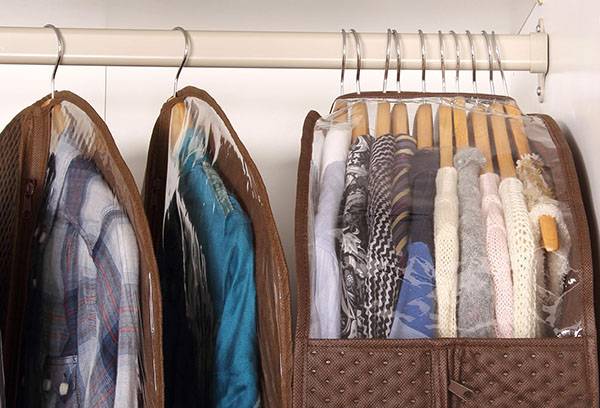
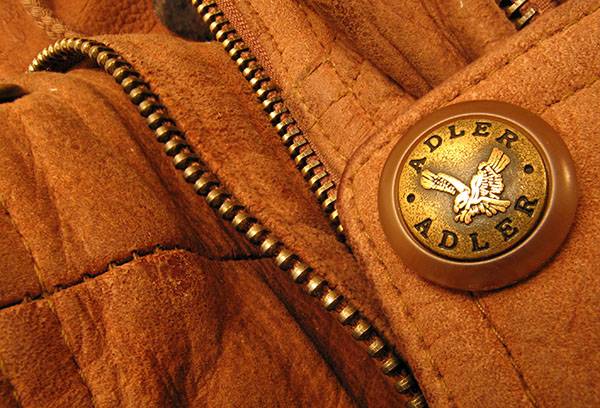
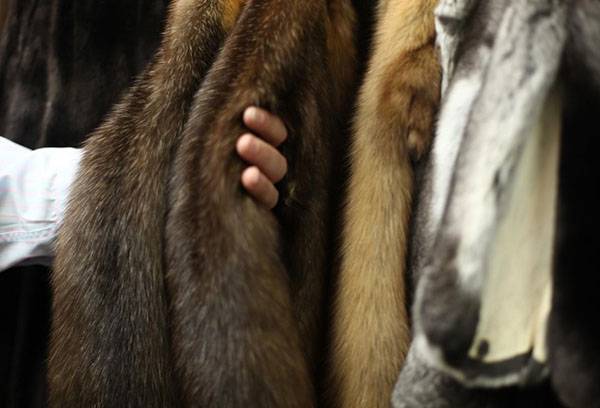

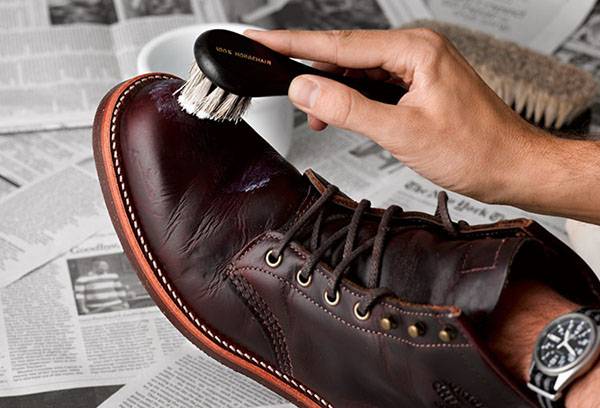
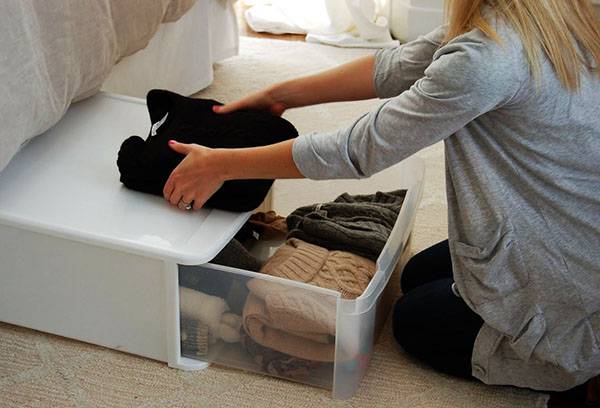
Cool site
Work shirts were my headache until I started using dry cleaning services. My husband changes five shirts a week and I also have five working white blouses a week put on, and each of them has its own conditions for leaving on a label. Washing took a lot of time, which I could spend on self-development. Thinking, I began to look for a dry cleaner with a collection point near my home, I found Bianca and have been handing things in for six months, they always clean everything normally and process shirts with something so interesting that they wrinkle less during wear.